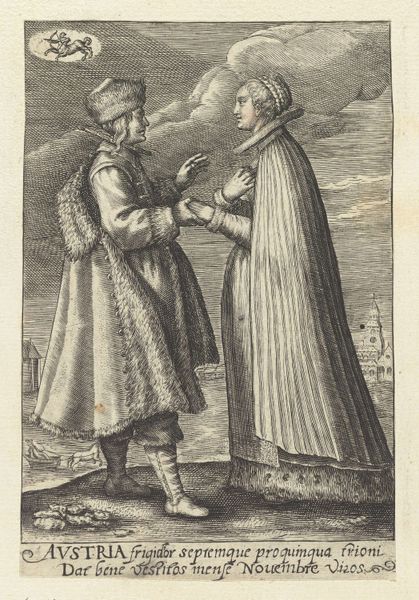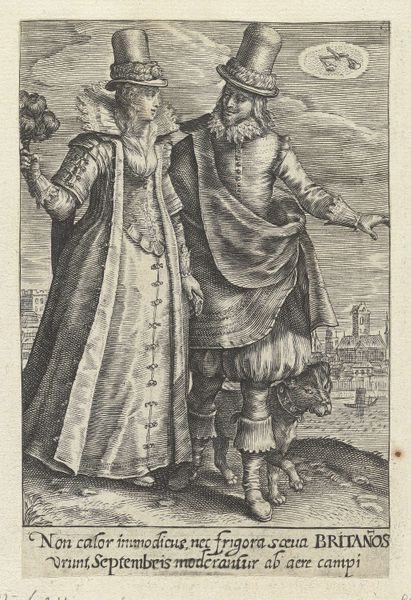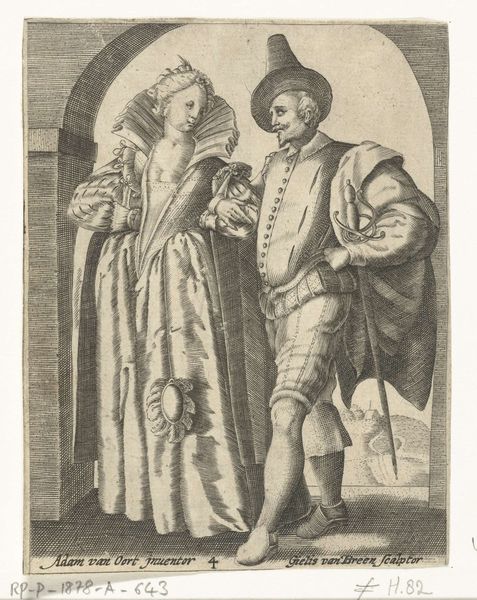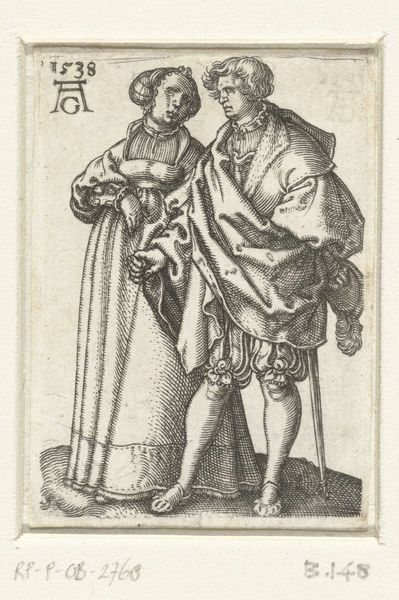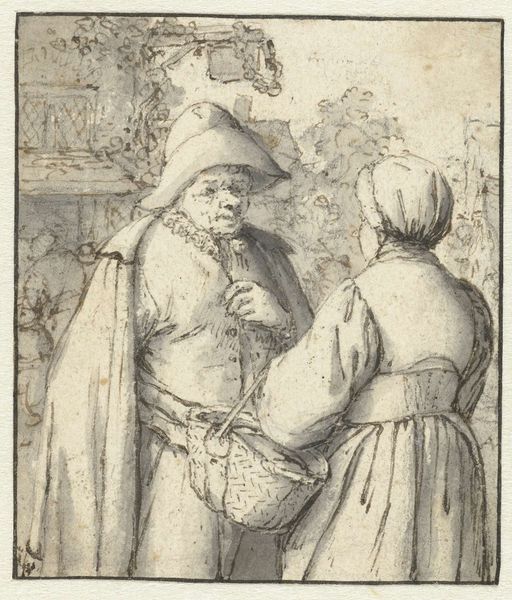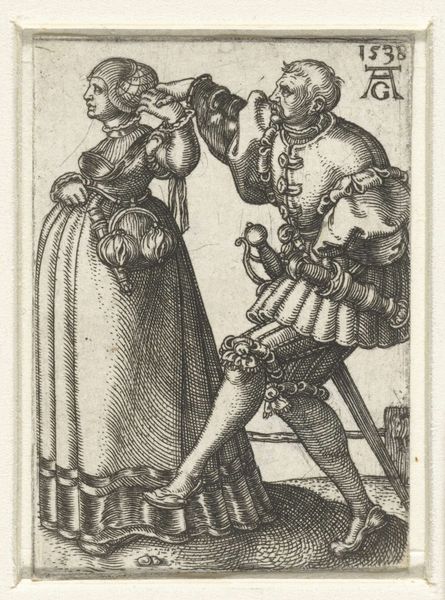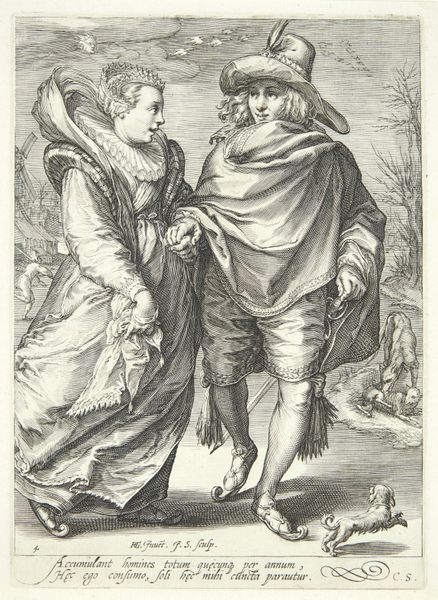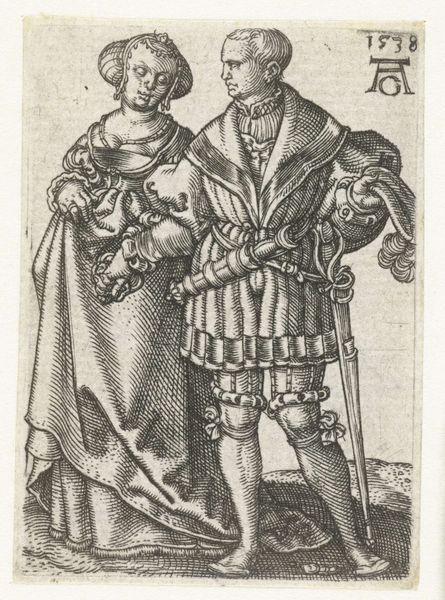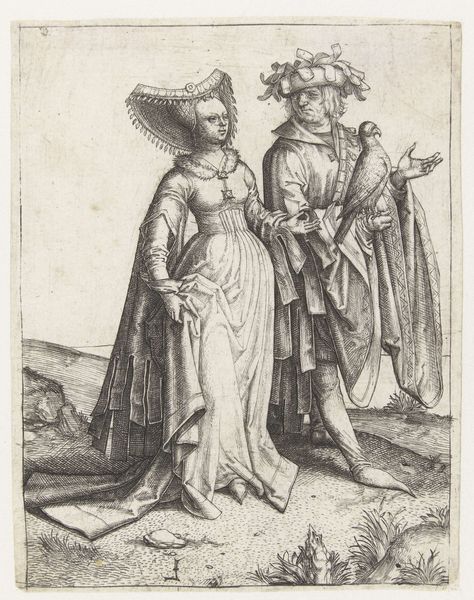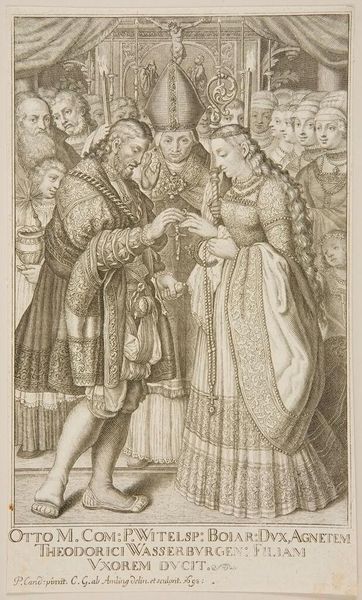
print, engraving
#
portrait
#
baroque
# print
#
old engraving style
#
portrait drawing
#
genre-painting
#
northern-renaissance
#
engraving
Dimensions: height 137 mm, width 91 mm, height 423 mm, width 271 mm
Copyright: Rijks Museum: Open Domain
Curator: This is an engraving entitled "Oktober: paar uit Duitsland" by Crispijn van de (II) Passe, likely created sometime between 1604 and 1670. Editor: There’s a crisp stillness to this print. I’m struck by the fineness of the lines, and the way that level of detail conveys a tangible sense of texture—the folds in the woman's dress, the man’s feathery plume. Curator: Considering its context, the genre painting highlights the social constructs of 17th-century Germany. Notice the fashion: The woman’s high collar and the man's ornate clothing signify status. The gifting of grapes— a gesture perhaps imbued with layers of cultural meaning surrounding courtship and class. Editor: Absolutely, but let's look at the material itself. The labor involved in producing this engraving-- the physical act of carving these delicate lines into metal-- that reveals the means of circulating such images within society. Was this print meant for mass consumption or a more elite audience? What's striking is how it serves both to preserve a moment and also becomes a commodity. Curator: I’d argue further that it also propagates certain values. This scene reinforces societal norms regarding gender roles, courtship, even agricultural bounty. What is depicted is as telling as how it's depicted, perhaps more so, for contemporary discussions of German identity and heritage. Editor: I see your point, it can't be overlooked. I also appreciate the artist’s choices— why an engraving, and how does this speak to skill and production possibilities, influencing viewership beyond a painting’s singularity. The location too, displayed here at the Rijksmuseum; that changes its significance yet again through time. Curator: Agreed. Seeing this work is about viewing historical narratives in multiple, contemporary ways. We cannot escape the layers of significance the work acquires through being seen. Editor: Ultimately, analyzing an object such as this through material and process alongside sociohistorical dimensions exposes a wealth of perspectives regarding production, skill, distribution, class, and taste.
Comments
No comments
Be the first to comment and join the conversation on the ultimate creative platform.
